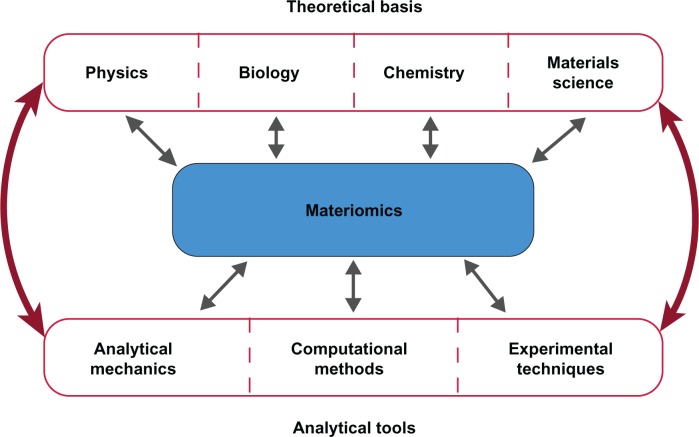Figure 4.
The study of materiomics has a multidisciplinary theoretical, computational, and experimental foundation resulting from the historical progression of physics, biology, chemistry, and materials science. Each has contributed to the development of nanotechnology and increased knowledge base on the fundamental behavior and functional (eg, mechanical) properties of biological materials, but only through a cross-discipline ‘collective’ approach can the complexity of Nature’s design be understood, and eventually utilized. We thus label this integrated holistic study of Nature’s materials as materiomics. Nature effortlessly incorporates such disparate fields at the nano and molecular scales, requiring a prudent usage of different theory and investigative techniques. Opportunely, analytical techniques such as continuum mechanics, computational methods (including statistical mechanics, molecular dynamics, finite element approaches, etc.), and experimental techniques (such as AFM, nanoindentation or magnetic/optical tweezers) have recently developed the precision and sophistication required to investigate materials throughout a wide range of length and timescales.

